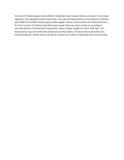| dc.contributor.author | Langat, K Bernard | |
| dc.contributor.author | Siele, K David | |
| dc.contributor.author | Nanyingi, O Mark | |
| dc.contributor.author | Mutai, K Charles | |
| dc.contributor.author | Rukunga, M Geoffrey | |
| dc.contributor.author | Mwandawiro, Charles | |
| dc.contributor.author | Ireri, Labane | |
| dc.contributor.author | Tonui, K Willy | |
| dc.date.accessioned | 2015-03-26T10:45:53Z | |
| dc.date.available | 2015-03-26T10:45:53Z | |
| dc.date.issued | 2012 | |
| dc.identifier.citation | Journal of Biologically Active Products from Nature Volume 2, Issue 1, 2012 | en_US |
| dc.identifier.uri | http://www.tandfonline.com/doi/abs/10.1080/22311866.2012.10719107#.VRPhuuE3iM8 | |
| dc.identifier.uri | http://hdl.handle.net/11295/81713 | |
| dc.description.abstract | The control of Aedes aegypti using synthetic insecticides have caused tolerance and injury to non-target organisms, thus needing botanical insecticides. This study involved extraction and evaluation of Tithonia diversifolia for larvicidal activities against Aedes aegypti. Hexane, acetyl acetate and methanol extracts from the root bark of Tithonia diversifolia were assayed. Bioassays were carried out according to recommendations of World Health Organization. Doses assayed ranged from 50 to 2430 mg/l. The hexane extract was more lethal than methanol and ethyl acetate. The bioactivity of phytochemicals varied significantly. Hexane extracts should be analyzed and isolated to determine the active principles. | en_US |
| dc.language.iso | en | en_US |
| dc.publisher | University of Nairobi | en_US |
| dc.title | Larvicidal action of extracts from tithonia diversifolia against the dengue mosquito aedes aegypti (diptera: culicidae) | en_US |
| dc.type | Article | en_US |
| dc.type.material | en | en_US |

